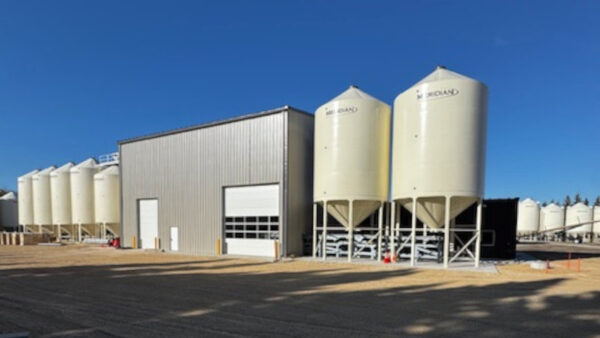CDC Austenson isn’t just a barley — it’s a legacy. Crowned Seed of the Year for 2025, this feed barley has become a cornerstone of Canadian agriculture, celebrated for its remarkable yield, straw strength and adaptability.
Developed at the University of Saskatchewan’s Crop Development Centre (CDC), CDC Austenson has not only stood the test of time but has also reshaped what growers expect from a barley variety. For Brian Rossnagel, retired barley breeder at the CDC, CDC Austenson represents the culmination of decades of dedication.
“CDC Austenson was really the result of 30 years of work,” Rossnagel says. “We produced about 20 feed barley varieties over my career, but CDC Austenson, without question, is number one. It’s a variety I’m most pleased with.”
A Long Journey to a Breakthrough
The journey to CDC Austenson began with parental development from the early 1980s to a final cross made in 2000. After early generation selection by 2006, the breeding line was undergoing yield trials, where its potential began to shine.
“When we reached the yield trial stage, there was a set of sister lines from that cross which stood out as group versus sister line sets from other crosses but the selection that became CDC Austenson consistently stood out,” Rossnagel says.
Despite its promising start, the path to success required more than just good genetics.
“Plant breeding is as much about eliminating the poorer selections as it is about selecting the better/best ones,” he says. “We weren’t sure which line would emerge, but once CDC Austenson entered co-op trials, its performance made it clear we had a winner.”
What made CDC Austenson so special? According to Rossnagel, the variety struck a perfect balance of traits for farmers.
“It combined exceptional agronomic performance with excellent physical grain quality — plumpness, kernel size and uniformity,” he says. These qualities made it particularly valuable for livestock feeding, especially for cattle, where those characteristics are critical.”
Farmers also appreciated CDC Austenson’s straw strength and disease resistance, the former which was notable despite its medium height.

“Straw strength is often correlated with shorter varieties, but CDC Austenson managed to maintain robustness without being super short,” Rossnagel adds.
CDC Austenson quickly gained traction among farmers, achieving a rare feat for a feed barley variety: it became the most popular barley in Western Canada, surpassing even malting varieties. Its dominance was not limited to one region, either.
“Growers from Alberta, Saskatchewan and Manitoba all praised it,” Rossnagel recalls. “That widespread acceptance was really gratifying.”
The Team Effort Behind Success
While Rossnagel played a pivotal role, he emphasizes the collaborative nature of plant breeding. “You rely on so many people — not just to create a variety but to grow it, test it, and bring it to market,” he says, highlighting contributions from colleagues like Tom Zatorski and organizations like SeCan.
Zatorski was assistant breeder at the time CDC Austenson was created, and now serves as an agronomic innovation manager for Nutrien Ag Solutions in northeast Alberta.
“CDC Austenson had everything it needed from a quality perspective. During its development I focused on its grain attributes, making sure it checked all of the boxes that both Brian and I preferred. I do recall that I was tougher on it when assessing it against others in the field and typically rated it as, well, average in comparison to what else we had in the program at that time,” Zatorski says.
“Now, looking back and seeing it still in production — it’s humbling. Sure, it’s a bit taller than I would’ve liked, but that’s where Brian came in. He had this incredible ability to spot winners, even among thousands of lines. I might’ve walked right past something but he had this sharp eye to pick out the elite ones. It’s s a real gift that he has and it made all the difference.”
Even in retirement, Rossnagel remains proud of CDC Austenson’s legacy.
“After 15 years, it’s still occupying the majority of western Canadian feed barley acreage,” he notes. “And it’s contributed significantly to the parentage of newer varieties that build on its strengths.”
After registration of CDC Austenson in 2009, it was licensed to SeCan. Todd Hyra, western business manager, notes that CDC Austenson has been SeCan’s top barley nine out of the last 12 years for all feed and malting barley.













